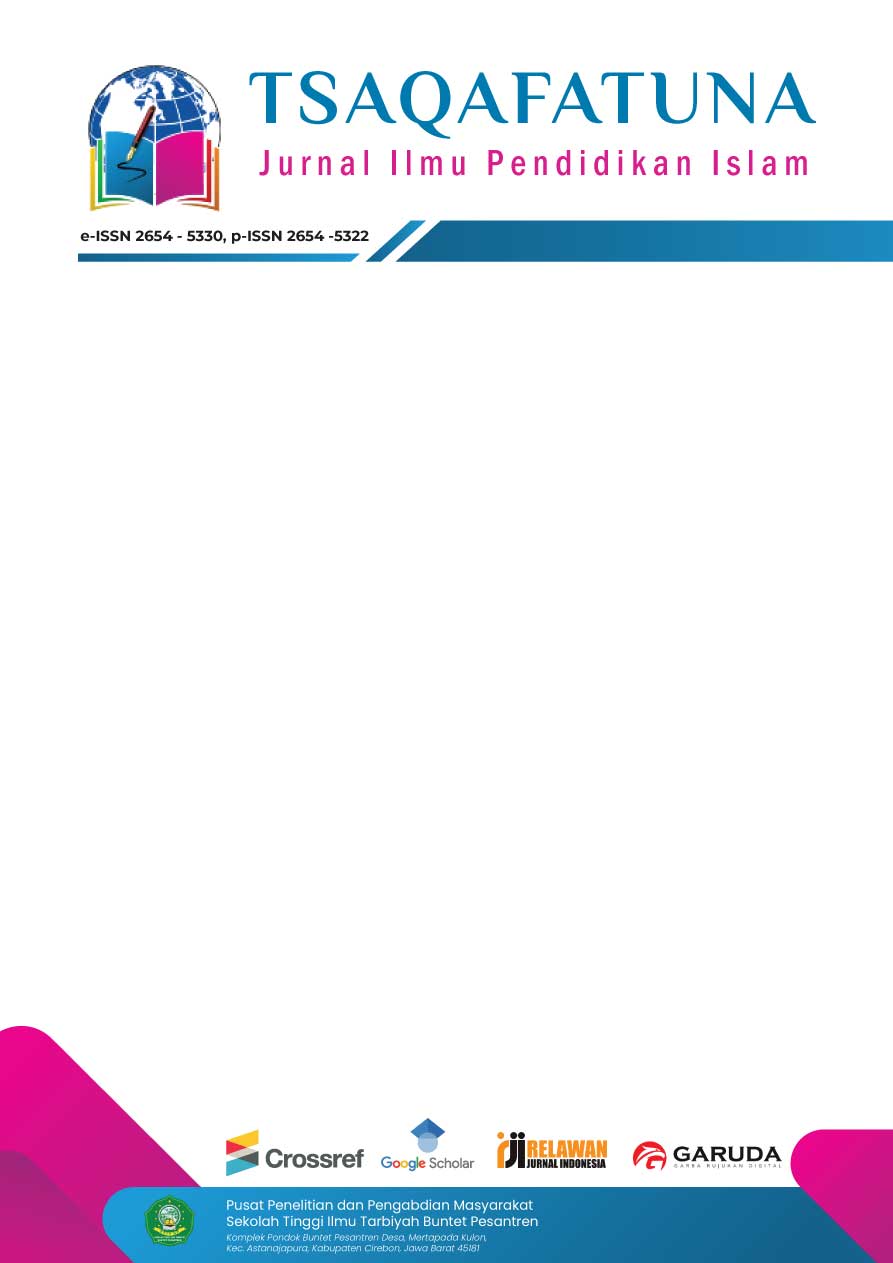Analisis Diskursus Gender pada Salah Satu Bahan Ajar PAI
##plugins.themes.academic_pro.article.main##
Abstract
This study aims to examine gender representation in Islamic Religious Education textbooks, especially the Grade VI Akidah Akhlak Book of the Merdeka Curriculum. By using the Critical Discourse Analysis (AWK) approach of the Norman Fairclough model, researchers seek to identify and analyze gender biases and stereotypes hidden in the narrative, illustrations, and language structure of the textbook. The results showed that although narratively this book tends to use neutral language, from the visual aspect and the choice of characters, the dominance of men as the main actors is very visible. Women tend to be placed as extras or complements in various social, environmental, and moral activities. These findings indicate an implicit bias that has the potential to strengthen gender stereotypes in the educational environment. This study recommends the need to revise textbooks to be more inclusive and gender-perspective, in order to support fair and equal religious education.
Keyword: Gender Representation, Akidah Akhlak Book, Critical Discourse Analysis
##plugins.themes.academic_pro.article.details##
References
- Akhtar Rio Hidayat, Farhan Pria Syawaldi, and Ridho Syafiq. “Peran Gender Dalam Badan Legislatif Mahasiswa Pendidikan Sosiologi : Perspektif Sosiologi Organisasi.” Jurnal Bintang Pendidikan Indonesia 1, no. 3 (2023): 34–46. https://doi.org/10.55606/jubpi.v1i3.1600.
- Andini, Tresna Nur, Didin Nuruddin Hidayat, Nida Husna, and Alek Alek. “A Critical Discourse Analysis of Gender Representations in EFL Textbook of Senior High School.” Getsempena English Education Journal 10, no. 1 (2023): 55–72.
- Coates, Jennifer. “Gender and Discourse Analysis.” In The Routledge Handbook of Discourse Analysis, 90–103. Routledge, 2013.
- Gee, James Paul, and Michael Handford. The Routledge Handbook of Discourse Analysis. The Routledge Handbook of Discourse Analysis, 2013. https://doi.org/10.4324/9780203809068.
- Mujahiddin, Khoirul. Akidah Akhlak Mi Kelas Iii. Direktorat KSKK Madrasah, Direktorat Jenderal Pendidikan Islam, Kementerian Agama RI, 2020.
- Peter Sali, Gender,Advanced English Indonesia Dictionari, n.d.
- Suharnanik. “Buku Ajar Sosiologi Gender,” 2023, 49.
- Sunderland, Jane. Gendered Discourses. Springer, 2004.
- Wahyudi, Agus, and Asmaul Lutfauziah. “Analisis Wacana Gender Pada Buku Tematik Sekolah Dasar Kurikulum 2013.” Lingua Franca: Jurnal Bahasa, Sastra, Dan Pengajarannya 7, no. 2 (2023): 137–55.
- Wicaksono, Mochammad Jiva Agung, Nina Nurmila, Bambang Samsul Arifin, and Karman Karman. “Critical Discourse Analysis of Gender Construction on Islamic History Content in the Islamic Religious Education Textbook for Junior High School.” Jurnal Pendidikan Agama Islam 18, no. 2 (2021): 475–92.
- Zuriah, Nurul. “Metodologi Penelitian Sosial Dan Pendidikan Teori Aplikasi,” 2006.
- Fairclough, N. (1995). Critical Discourse Analysis.

